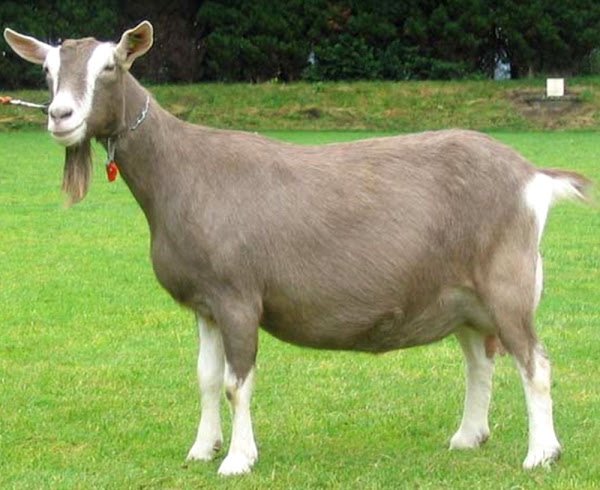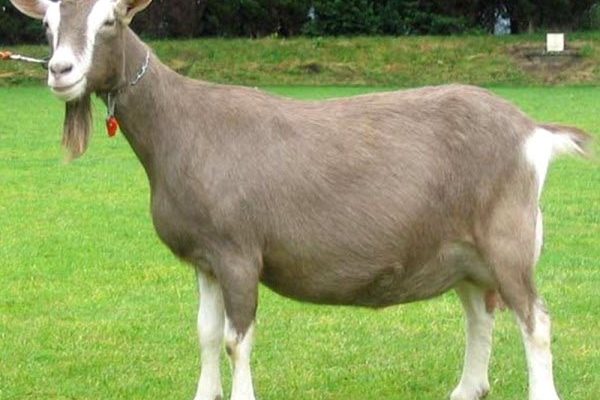
Toggenburg goats are one of the oldest known dairy goat breeds, and they have a lot to offer beyond their adorable appearance. From their striking chocolate and white coats to their incredible milk production capabilities, understanding this breed can open up a whole new world for goat enthusiasts and farmers alike. Let’s dive in and explore the history, characteristics, and primary uses of the Toggenburg goat together!
Rich History of the Toggenburg Goat
The Toggenburg goat’s story begins in Switzerland, where this breed has been around for centuries. The actual documentary history dates back to the 18th century, but local folklore suggests that goats were kept in the Toggenburg Valley long before that. Imagine farmers milking these goats amid the breathtaking Swiss Alps, the clinking of bells around their necks echoing through the valleys. That’s a pretty cool image!
Initially, the Toggenburg goat was bred for its milk. Local farmers recognized its excellent milk production and adaptability to cold climates. By the 19th century, Toggenburgs were being exported to other countries, spreading their dairy prowess far and wide. Even today, they are cherished in both their homeland and beyond for their quality milk and friendly demeanor.
Toggenburg Goat Traits
One of the standout features of the Toggenburg goat is its appearance. These goats typically have a medium-sized, strong body with a short coat that can range from light brown to dark chocolate. They often sport distinctive white markings on their faces and legs. It’s kind of like they’re wearing nature’s own tuxedo!
But looks aren’t everything. Toggenburgs are known for their excellent temperaments. They are generally friendly and easy to handle, making them great companions for both seasoned goat owners and beginners. Their curiosity and playful nature can also add a lot of joy to your farm or backyard. Honestly, who wouldn’t want a little goat buddy hopping around?
Size and Build
In terms of size, adult Toggenburg goats typically weigh between 120 to 150 pounds. They have a robust build that allows them to thrive in various environments, which is a significant advantage for farmers. Their strong legs and sturdy feet help them navigate hilly terrain, making them quite agile and hardy.
Their body structure is designed for functionality. Their udder is well-shaped for easy milking, which is a big plus for dairy farmers. Plus, their solid bone structure contributes to their overall health and lifespan. With proper care, Toggenburgs can live for over a decade!
Primary Uses of Toggenburg Goats
So, what exactly are Toggenburg goats used for? They serve multiple purposes, but their primary role is as dairy goats. Toggenburgs are known for producing high-quality milk that’s rich in butterfat. This makes it ideal for cheese, butter, and yogurt. If you’re thinking about getting goats primarily for milk, the Toggenburg is worth considering!
Toggenburg milk has a sweet flavor, which many cheese makers appreciate. Some artisanal cheese makers even prefer Toggenburg milk for crafting specialty cheeses. It’s remarkable to think that a breed renowned for its quality is contributing to delightful culinary creations!
Meat and Fiber Production
While Toggenburg goats are not primarily raised for meat, they can be part of a multi-purpose farm. Their meat is lean and flavorful, making it a potential option for those who might be interested in dual-purpose goats. However, if your primary goal is meat production, you might want to look at breeds specifically bred for that purpose.
In addition to milk and meat, their fiber can also be a bonus! While Toggenburgs don’t produce as much fiber as some other breeds, they do have a fine undercoat that can be harvested. This can be spun into yarn or used in crafts. So, if you’re crafty, there’s another way to enjoy your Toggenburgs.
Care and Management of Toggenburg Goats
Caring for Toggenburg goats is relatively straightforward, but there are some key points to consider. They require a balanced diet, regular veterinary care, and plenty of space to roam and forage. Imagine having a little patch of land with grass, bushes, and maybe even a few trees—perfect for your Toggenburg to explore!
Their diet should primarily consist of hay, pasture, and goat feed formulated for dairy goats. It’s essential to provide them with fresh water every day, especially if they’re producing milk. The more milk they produce, the more hydration they’ll need!
Housing Needs
When it comes to housing, Toggenburg goats thrive in clean, dry, and well-ventilated shelters. They should have access to a comfortable barn or shed, especially during harsh weather. You might even consider giving them an outdoor pen where they can bask in the sun and graze freely. After all, a happy goat is a healthy goat!
Regular hoof trimming and health check-ups are also important to keep them in top shape. They can be prone to certain health issues, just like any other domestic animal, so staying vigilant is essential.
In a nutshell, Toggenburg goats are a fantastic option for anyone looking to raise dairy goats. With their rich history, friendly demeanor, and impressive milk production, they can be a valuable addition to your homestead or farm. Plus, their adaptability means they can thrive in various environments, whether you’re in the rolling hills of Switzerland or the countryside of Ohio.
So, whether you’re dreaming of crafting your own cheese or simply want some furry friends around, consider the Toggenburg goat. They’re more than just animals—they’re companions that can provide joy and productivity in your life.

